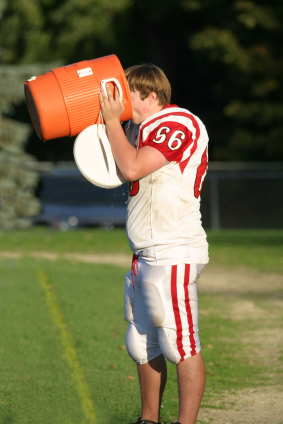 According to the National Center for Catastrophic Sports Injury,140 football players - from youth to high school, college to pro, died from heat stroke between 1960 and 2014, with an average of 2.6 heat stroke deaths in football for the most recent five year period from 2010 to 2014 (two in 2014).
According to the National Center for Catastrophic Sports Injury,140 football players - from youth to high school, college to pro, died from heat stroke between 1960 and 2014, with an average of 2.6 heat stroke deaths in football for the most recent five year period from 2010 to 2014 (two in 2014).
The reason, according to an August 2008 study by researchers at the University of Florida, is that football players are especially vulnerable to heat illness because:
- They practice and play in hot, humid conditions, often in direct sunlight. Under common game and practice conditions of 70 degree temperatures and 50 percent humidity, a rise in the player's core temperature is unavoidable.
- They often have a high body mass index (ratio of body mass to body surface area)
- Football protective equipment (helmet, pads, gloves, bandages, socks) all act as thermal insulators;
- The physical nature of the game leads to very high metabolic heat production;
- Fluid loss via sweating occurs at rates that exceed the ability of the player to replenish by drinking, with athletes frequently only replacing half of body-fluid losses from exercise;
- They do not feel thirsty until after they are already dehydrated;
- As little as 2% dehydration can hinder body temperature control and further predisposes a player to developing heat illness; and
- In many circumstances, the ambient and under-uniform humidity are so high that evaporative heat loss is significantly impaired.
It is therefore critically important that football programs take steps to reduce the risk that players will suffer heat-related illnesses, especially during hot weather in the summer and fall.
For pre-season acclimatization guidelines, click here.
Revised and updated June 15, 2016








